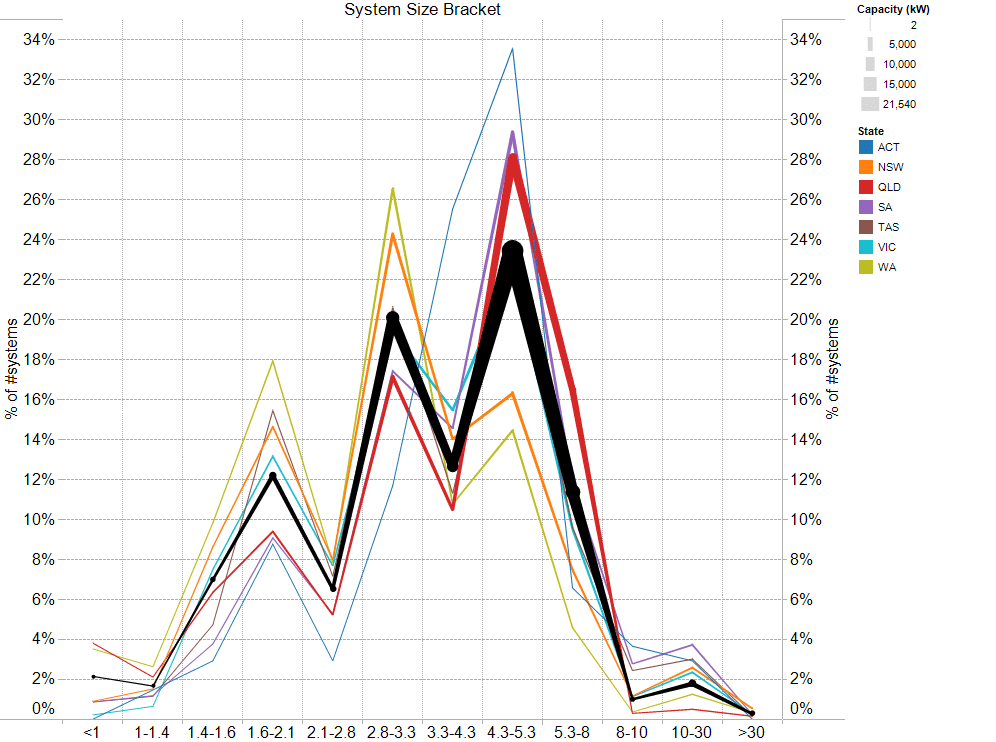It was just a few years ago when a modest 1.5kW rooftop solar system – the equivalent of around six panels – was the norm for Australian households.
How that is changing. As today’s Graph of the Day – courtesy of Warwick Johnston’s Sunwiz Consulting – shows, barely 10 per cent of the rooftop solar systems installed in Australia now are of that size.
Already, the average size of a rooftop solar system around the country is 3kW – and many of the new systems are well above that. According to Johnston’s data, 5kW systems are now the most popular in the progressive “solar” states such as Queensland and South Australia – while 3kW remains the most popular in NSW and W.A. That is probably a reflection of the tariffs paid for exports to the grid.
Of course, Australia still has some way to go to catch up with the US – where according to SunPower, which specializes in solar leasing products, the average size of rooftop solar systems has gone to 8.3kW.
That’s got something to do with the size of the roofs, and also the tariff measures. Most places in the US get a 1:1 tariff, so the incentive is there to put on a larger system.
“That’s a really big system,” Sunpower’s products chief Jack Peurach conceded during an analysts briefing earlier this month. “You are putting as much PV on your roof as you can, but you are putting it there because you want to generate as much electricity as you can. And you do that because it’s cheaper.”











